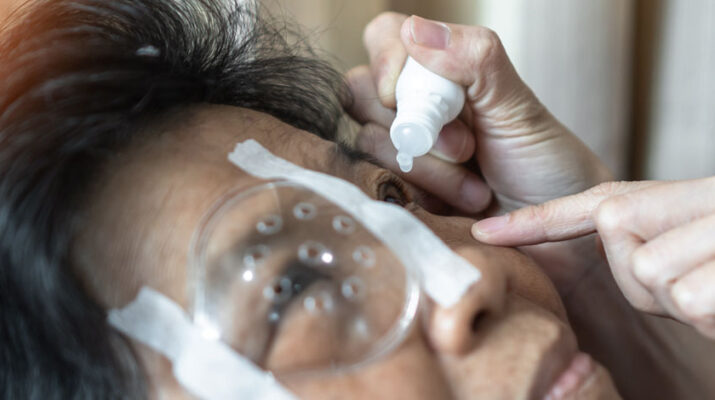There are several risk factors you should watch for
By Megan Plete Postol
Age-related macular degeneration can make life difficult.
What is macular degeneration exactly? It is a condition that deteriorates the sharp, central vision that is used for activities such as reading or driving. It’s called age-related because it most commonly occurs in people aged 50 and older.
People with AMD still retain normal peripheral vision, according to Jaydeep Tripathy, a primary care doctor at Doctor Springs.
“So for example if they are looking at an analog clock, they can see the hands of the clock but not the numbers,” Tripathy said. “This is common and is the leading cause of permanent vision loss. Even when it doesn’t lead to complete vision loss, it can still cause severe vision problems.”
In some cases, dry form macular degeneration can lead to wet form. AMD may not present symptoms in its early stages, but it can be observed when there are changes in your vision. You may observe blurry vision, dark spots in the center of your vision, or in rare cases different color perceptions.
The macula is in the back of the eye and is a part of the central retina that detects light. Age-related macular degeneration causes central vision loss and blurry vision. Therefore, eye surgeons may need to intervene.
“Depending on the type of AMD, there may be gradual vision loss or a more rapid onset with a greater magnitude of vision loss and sometimes blindness,” physician Laurie Marbas, a double board-certified family medicine and lifestyle medicine physician, said. “There are two types of AMD. The first, called dry AMD is the least severe, with a slower onset but the most common.”
Dry AMD impacts 85-90 percent of those with AMD overall, Marbas said. Dry AMD is characterized by blood and fluids leaking into the retina from the vessels that grow under the macula.
“You not only lose central vision but your vision gets so distorted that straight lines appear wavy,” Tripathy said. “Vision loss can be permanent when the bleeding forms a scar.”
This type can be treated with specific vitamins called AREDS or AREDS2.
AREDS/AREDS2 supplements delay progression of intermediate to advanced AMD and may help maintain vision longer. A study conducted by the National Eye Institute followed participants for more than 10 years, and the benefits of AREDS persisted over the duration.
Wet AMD is the most severe type, leading to substantial vision loss and blindness, Marbas said. It has a rapid onset but is the least common, impacting 10-15 percent of overall AMD cases, according to Dr. Marbas. Treatment requires more intervention and can include surgery.
There are multiple risk factors for AMD including age, smoking, ethnicity, family history, alcohol use, heart disease, and use of certain medications like aspirin. With the help of cataracts surgery, one might be able to see better.
Diets high in fruits, vegetables, and fish have been correlated with a lower risk of AMD and the greater the adherence to a healthy diet the larger the risk reduction, Dr. Marbas said. Diets highest in carotenoids, zeaxanthin, lutein, zinc and omega-3 and omega-6 polyunsaturated fatty acids had the most benefit.
“My recommendation is to eat a whole food, plant-based diet eating the colors of the rainbow and include vegetables, fruits, whole grains, legumes, nuts and seeds,” Dr. Marbas said.
So, eat healthy, watch for symptoms, and consult a doctor if there are any concerns.

